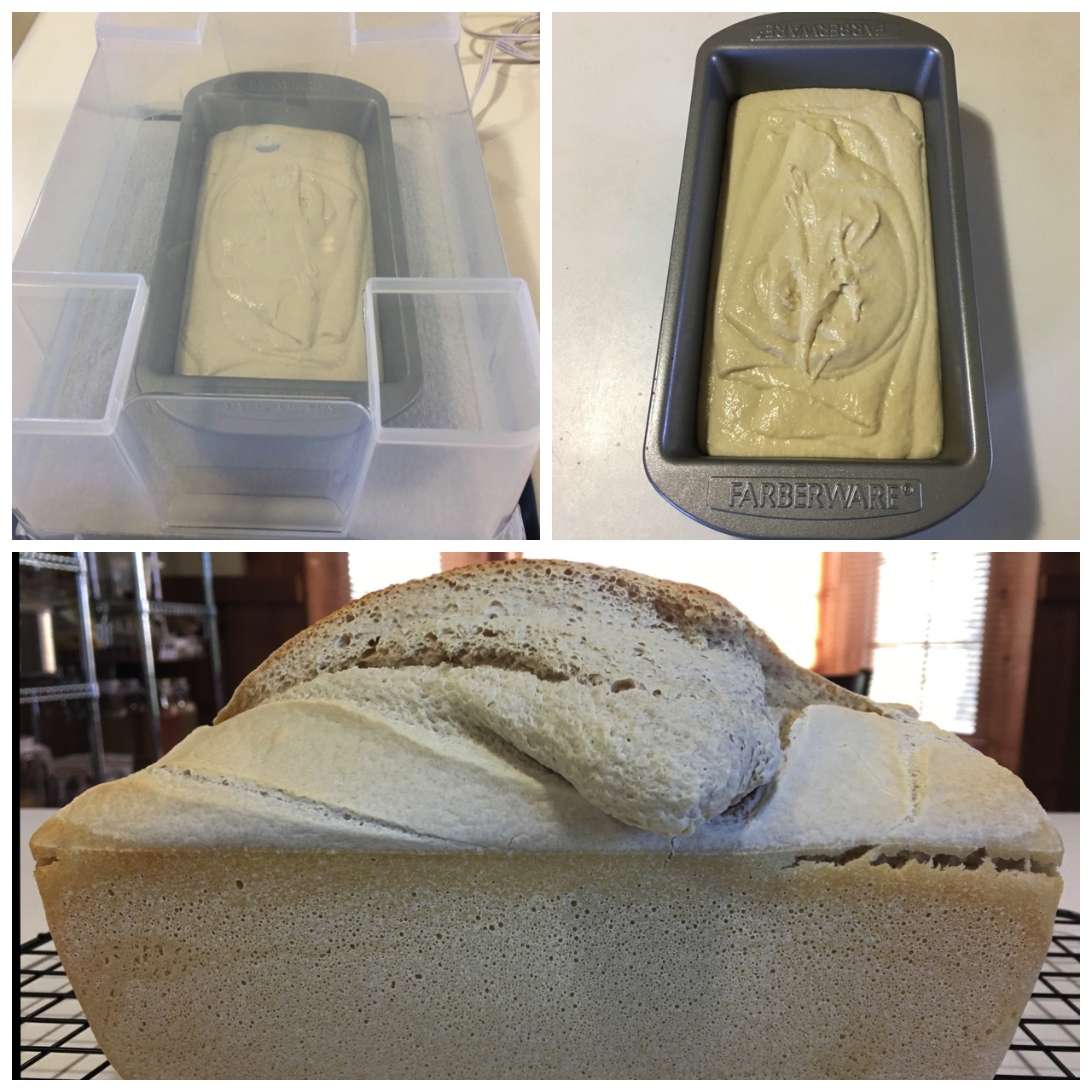You may already have met Audrey the sourdough starter (technically, Audrey II, mother to Audrey III – Audrey III lives with cool folks on a homestead in Australia!). She’s the key to the delicious loaves of bread we eat with our homemade soup, meatloaf sandwiches, and our incredible egg (thanks, ladies!) breakfasts.
Sourdough lends itself to beautiful boules, perhaps the most recognized shape for sourdough loaves, but we typically bake ours in a loaf pan so that we can easily make sandwiches. Making bread doesn’t have to take long or require herculean efforts, but the payoff is substantial: additive and preservative-free bread with simple ingredients, and in the case of sourdough, it’s a low glycemic index food. Sourdough bread is also acidic, so it doesn’t mold as quickly as other bread products. Interested in making your own? A simple recipe and instructions follow.We use Kevin Lee Jacobs’s “Sourdough Sandwich Loaf” recipe as the basis for our loaves: http://www.agardenforthehouse.com/2015/03/sourdough-sandwich-loaf/. We use a homemade proofing box made from a clean plastic container (roughly shoebox-sized) that sits atop a heating pad; the heating pad is set to low to ensure a slow, steady rise, and if needed, a small container of water can be set inside along with the dough to increase humidity. You will notice as you make loaves that the weather and ambient temperature will impact how quickly the dough rises – there have been occasions during the winter when it has taken nearly 8 hours for the dough to rise sufficiently, even with the proofing box. In addition, some loaves will rise sluggishly in the proofing box, only to nearly explode out of the loaf pan in the oven. They can be quirky!

The kneading in Jacobs’s recipe is done by stand mixer. For high hydration (very wet) dough, it’s necessary to let the stand mixer do the work because trying to knead it would be a frustrating and very sticky experience; this kind of dough is best poured into the pan to rise. Most of the time, we have dough that will form a ball fairly quickly and can be hand kneaded, if desired…but it’s not necessary. Hand kneading will allow you to shape the loaf nicely in the pan, rather than letting it free form. Is one approach superior to the other? You decide. One note: we don’t follow Jacobs’s method of folding the dough prior to placing it into the loaf pan; we’ve found that our loaves rise better if just gently patted into the loaf pan.
If you’re new to making sourdough bread or other sourdough products, just a reminder: don’t forget to feed your starter consistently, and make sure she appears to be healthy and active. You need a healthy, active starter and good flour to make great loaves. Need help troubleshooting starter issues? Cultures for Health has resources here: https://www.culturesforhealth.com/learn/sourdough/troubleshooting-sourdough-starter/.
Do you have tips for making great sourdough loaves? We’d love to hear from you.
